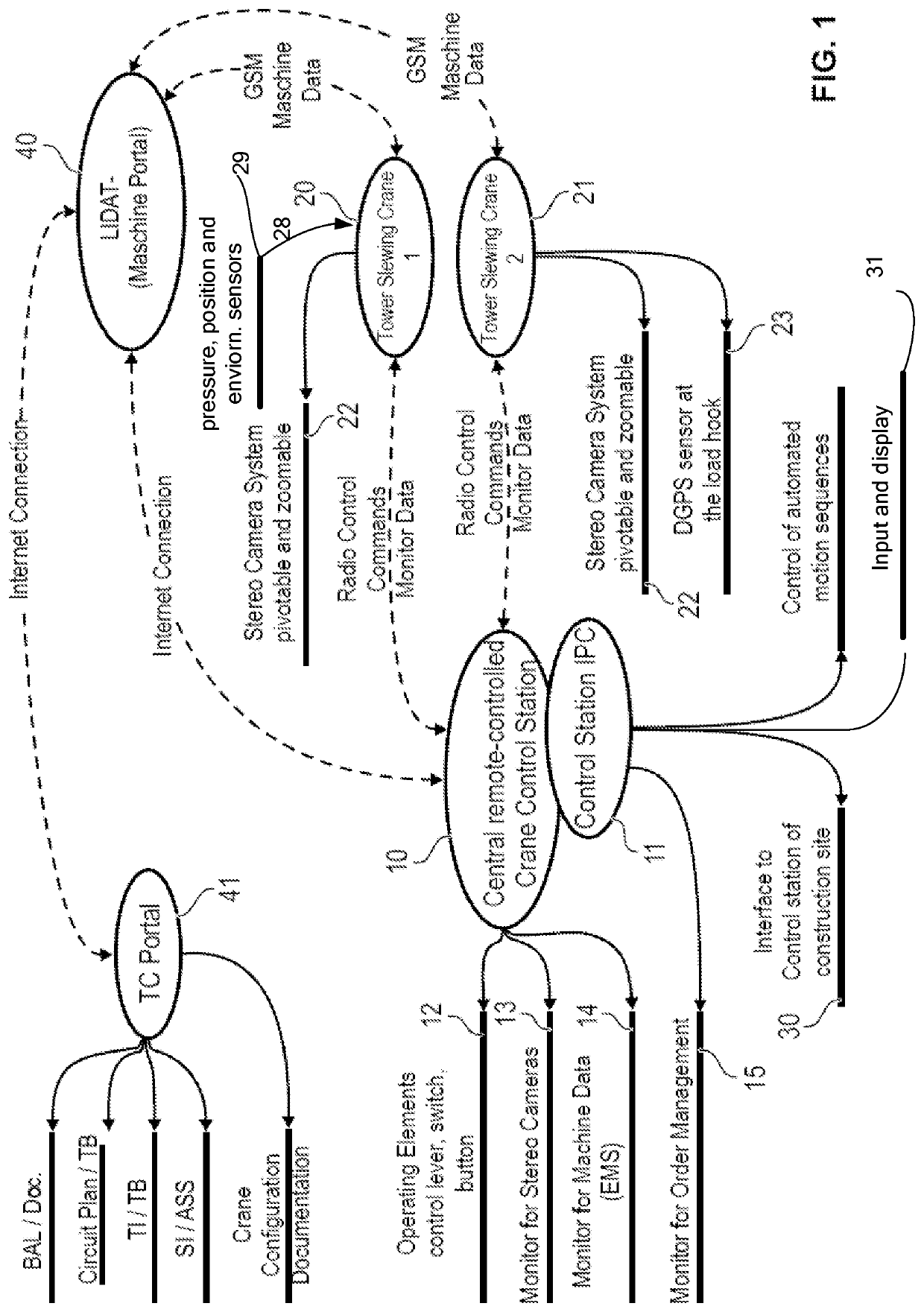Method for crane assembly
a crane and assembly technology, applied in the direction of cranes, load-engaging elements, transportation and packaging, etc., can solve problems such as unauthorised access to the construction si
- Summary
- Abstract
- Description
- Claims
- Application Information
AI Technical Summary
Benefits of technology
Problems solved by technology
Method used
Image
Examples
Embodiment Construction
[0033]As a central element, a central remote-controlled crane control station 10 is employed, the core component of which is constituted by an industrial personal computer (IPC) 11. In its crane functions, the discrete control station 10 is nearly identical to the control station in the crane cab of a crane 20, 21 to be controlled (tower slewing crane).
[0034]The central control station 10 can be accommodated in an office container at the construction site and serves to remotely control at least one crane 20, 21. The construction of the control station 10 is composed of multiple operating elements 12, such as a control lever, switches and buttons, a 3D-capable monitor 13 for the image crane monitoring, a monitor 14 for the representation of the machine data and a monitor 14 for the monitoring of tasks.
[0035]The crane 20, 21 provides a stereo camera system 22, the individual cameras of which are pivotably mounted on the crane structure. In addition, zooming is possible by use of the c...
PUM
 Login to View More
Login to View More Abstract
Description
Claims
Application Information
 Login to View More
Login to View More - R&D
- Intellectual Property
- Life Sciences
- Materials
- Tech Scout
- Unparalleled Data Quality
- Higher Quality Content
- 60% Fewer Hallucinations
Browse by: Latest US Patents, China's latest patents, Technical Efficacy Thesaurus, Application Domain, Technology Topic, Popular Technical Reports.
© 2025 PatSnap. All rights reserved.Legal|Privacy policy|Modern Slavery Act Transparency Statement|Sitemap|About US| Contact US: help@patsnap.com

